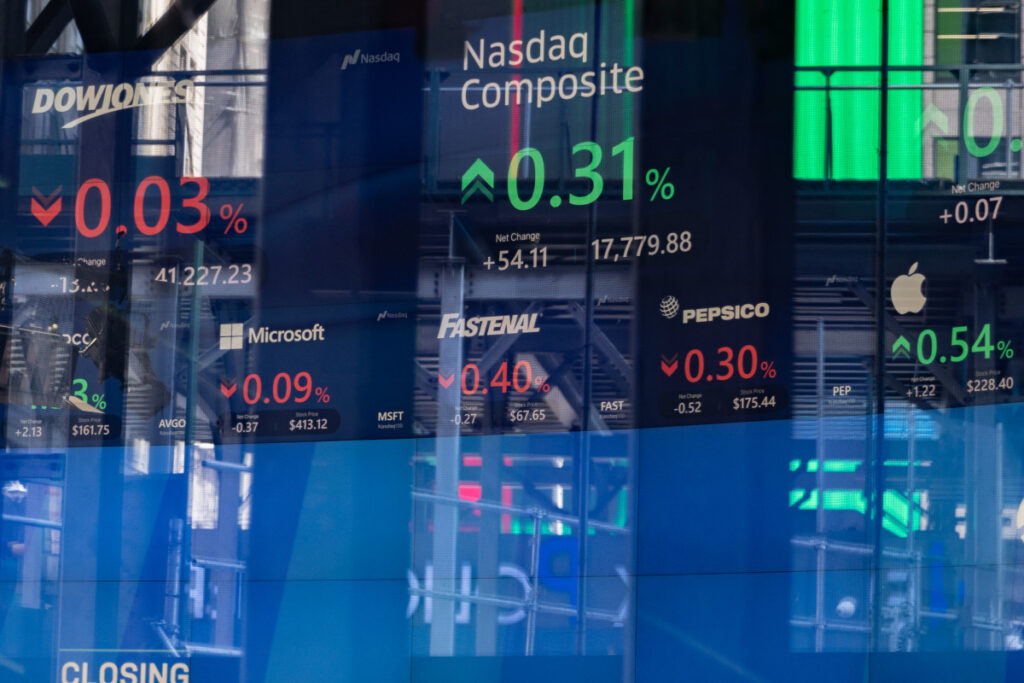While this is an election year, politics isn’t the only place where you can find an October surprise.
Wall Street can be the source of many startling events at this time of the year, when the leaves fall and the scarecrows rise.
Don’t miss the move: Subscribe to TheStreet’s free daily newsletter
“October has a checkered track record and this year is likely to have a couple of surprises,” says Louis Navellier, founder and chief executive of Navellier & Associates.
The Dow Jones Industrial Average is up about 12% year-to-date, while the S&P 500 climbed 20% and the Nasdaq advanced 18.3%.
However, consumers still harbor concerns about the economy.
Analysts writing in Deloitte’s September State of the US Consumer report said that although financial sentiment has been improving among higher-income households, it has remained relatively flat among middle- and lower-income households since 2022.
“Stagnating financial well-being sentiment might explain subdued discretionary spending intentions, as households reported focusing on non-discretionary categories and savings,” the report said.
Analyst cites ‘solid’ payroll report
“Spending intentions on housing continue to climb, potentially forcing consumers to search for cost-saving opportunities in other categories,” Deloitte said.
On Oct. 4 the U.S. Labor Department said that nonfarm payrolls climbed by 254,000 in September, up from a revised 159,000 in August and better than the 150,000 Dow Jones consensus forecast.
Related: Federal Reserve officials offer hints on what’s next for interest rates
“The nonfarm payroll number blew away even the most bullish estimates,” Navellier said.
“Expected to grow modestly from August’s 142K, September came in at 254K, the highest since May, and the August number was revised higher to 159K, an encouraging development after four straight months of revising the prior month’s data lower,” he added.
Navellier said that it was significant that the unemployment rate dropped to 4.1% from 4.2%.
“While stocks are seeing a relief rally, bonds traded down and yields rose as hopes for aggressive rate cuts by the [Federal Reserve] to support weak employment trends quickly faded,” he said.
“The 2-year yield popped [more than 0.13 percentage point] and the 10-year almost [0.1 point],” he noted. “The rise in interest rates initially restrained the stock rally. In a single day, the rhetoric has become that the next two rate cuts by the Fed are likely only” 0.25 percentage point.
“This solid report increases the odds that the economy will continue to grow above trend in the next quarter,” said Jeffrey Roach, chief economist for LPL Financial. “Our base case is the Fed will cut by a quarter point at the next few meetings.”
Roach said that hours worked edged down to 34.2 in September and were trending below the prepandemic average, which he said is an important metric for growth and productivity forecasts.
“Further, this solid payroll report validates a potential half-point reduction in [the Federal Funds Rate] was completely unwarranted,” he added. “Fed funds futures market is responding accordingly. The only caution flag could be the rise in those with multiple jobs.”
The number of those holding multiple jobs rose to 5.3%, he said, noting that the last time this ratio was higher was early 2009 when the economy was in the middle of the Great Financial Crisis.
TheStreet Pro: ‘market valuation stretched’
TheStreet Pro’s Chris Versace said that the stock market received positive news for the economy on Oct. 4, with a tentative deal ending the port strike and the September employment report “handily trouncing market expectations.”
“While we are enjoying the rebound effect that it is having on stocks closing out the week because two concerns have been removed, we have to also consider it will keep the market’s valuation stretched on multiple fronts,” he said.
More AI Stocks:
- Apple stock slides as big iPhone 16 bet sputters
- Analyst revisits Meta stock price target as Facebook parent ramps AI spend
- Analyst reviews BlackRock stock rating after AI partnership with Microsoft
Versace discussed the market’s current valuation in his Oct. 2 column.
“When valuation is mentioned, many folks only focus on the simple price-to-earnings ratio because it is easy, or they lack access to data required to calculate other metrics,” he said.
“Simple can be misleading, however, and that’s why we prefer to use a few different valuation metrics, to make sure we have the proper context.” he added. “Often that context for both the market and individual stocks is history.”
Versace pointed to the dividend yield, which is the amount of money a company pays shareholders for owning a share of its stock divided by its current stock price.
“Of the just over 500 constituents in the S&P 500, more than 400 of them are dividend payers,” he said. “Some have better yields than others, while other companies, including our own PepsiCo (PEP) , have a rising dividend policy.”
Versace said this information enables investors to examine the aggregate dividend payments for the S&P 500 and use dividend yield analysis to see if that market barometer is extended.
He noted the mismatch between an expensive P/E multiple (higher) and an expensive dividend yield (lower). Conversely, he said, when a P/E is cheap (low) the market’s dividend yield will be high.
Although the S&P 500’s dividend has been slightly higher recently than it was on Sept. 30, Versace said it’s still at a very low historical level.
“This adds to the view the market is stretched at current levels and supports our near-term view to remain on the sidelines,” he said.
Related: The 10 best investing books, according to our stock market pros
